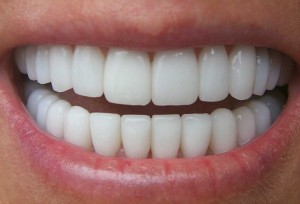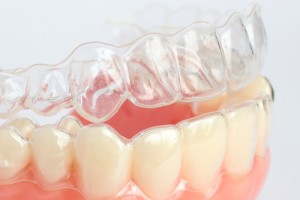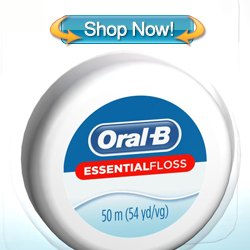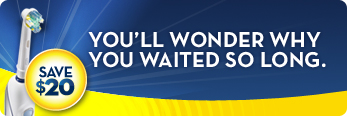 Dentists recommend flossing daily as part of a healthy dental regimen because it removes plaque and other debris that gets stuck between teeth that regular brushing may not remove. Daily flossing works in companion to brushing to keep your teeth health and minimize the risk of developing gum problems. Flossing can even aid in keeping your breath fresh and keep it from smelling foul. There are many benefits that come from flossing, however if you’re not flossing properly then you may not be getting the full extent of those benefits. Before starting to floss, it’s important to remember that you should never force or snap the floss; doing so may cause cuts or bruises to your gums.
Dentists recommend flossing daily as part of a healthy dental regimen because it removes plaque and other debris that gets stuck between teeth that regular brushing may not remove. Daily flossing works in companion to brushing to keep your teeth health and minimize the risk of developing gum problems. Flossing can even aid in keeping your breath fresh and keep it from smelling foul. There are many benefits that come from flossing, however if you’re not flossing properly then you may not be getting the full extent of those benefits. Before starting to floss, it’s important to remember that you should never force or snap the floss; doing so may cause cuts or bruises to your gums.
Waxed or unwaxed brands of floss is the best to choose from. Nylon (otherwise known as multifilament) floss comes in both waxed and unwaxed versions as well as a variety of flavors to choose form. PTFE (Otherwise known as monofilament) floss is a bit more expensive but it slides more easily between teeth, even in the tightest of spaces between teeth, and is virtually shred resistant. Even though nylon floss can potentially tear or shred, both types of floss are both extremely effective at removing plaque and other debris with used properly.
When preparing to floss your teeth, you should wrap the ends of the floss around your middle fingers and hold the extended floss between your thumbs and forefingers for a snug fit with both hands (the suggested length of floss for flossing is about 18 inches). As you slid the floss between your upper teeth, use your thumbs, and your index fingers to floss your bottom teeth. You shouldn’t work the floss too roughly and keep it gentle as you slide the floss back and forth between your teeth; then gently glide the floss in an up and down motion several times, and don’t forget to include the back of your teeth while doing so. You’ll want to gently pull the floss against your teeth so that it’s effectively working to remove and plaque or debris. It’s also important to keep in mind that you should also floss your molars; the back of the mouth is the most common place for gum disease and gum disease because it tends to be flossed less. As you continue to floss, you should unwind new floss as you go so that you’re flossing with a new piece of floss with each tooth and you’re not using the same piece. You should floss all your teeth.
If you can’t, or don’t want to, floss the traditional way, there are several other alternatives that you can incorporate as your flossing routine; which is highly encouraged for healthy family dentistry. There are floss holders, superfloss, and floss threaders.



